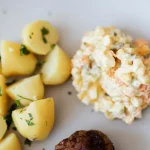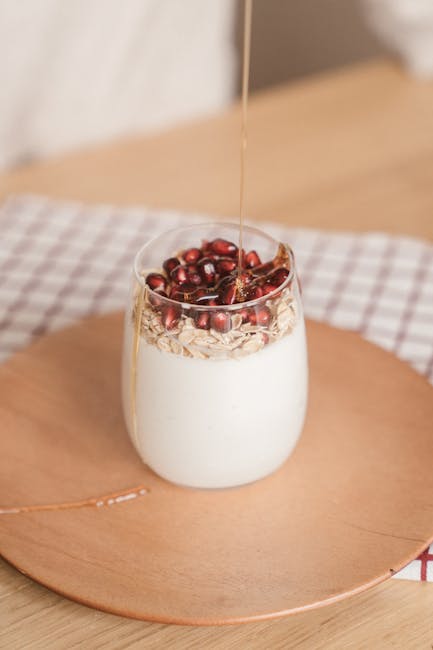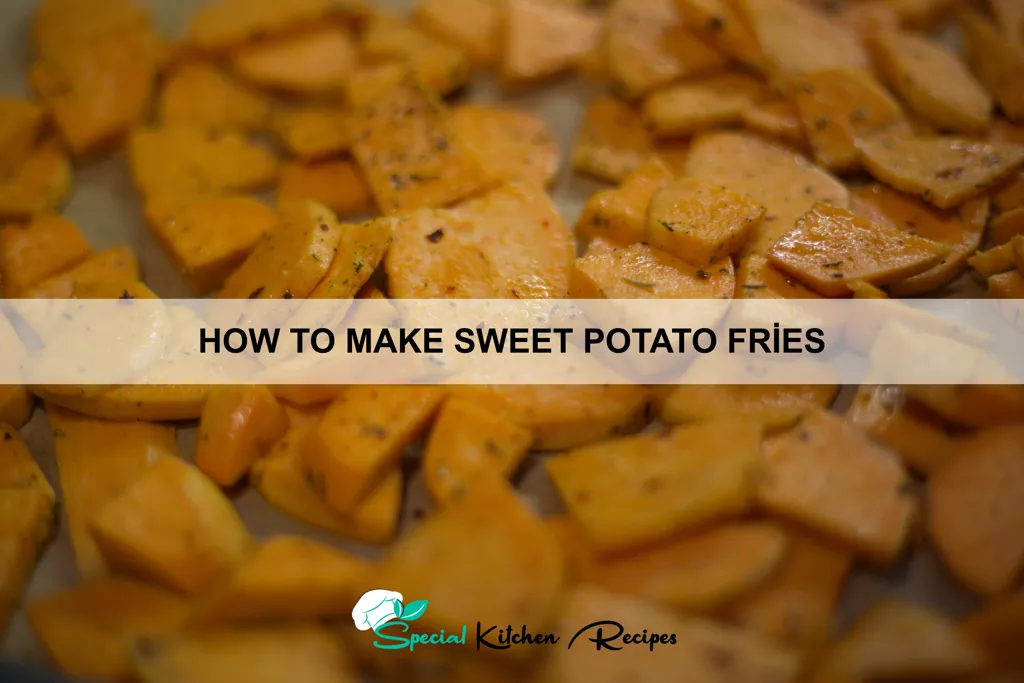Few things evoke the comforting warmth of a home-cooked meal quite like a batch of perfectly crispy roasted potatoes. While pinpointing the exact origin is difficult, the concept of roasting potatoes – essentially cooking them in dry heat – dates back centuries. Evidence suggests that potatoes, originally cultivated in the Andes mountains of South America, were roasted as a primary cooking method long before their introduction to Europe in the 16th century. Early methods likely involved open fires or simple earth ovens, resulting in a rustic, smoky flavor profile that remains appealing today.
The potato’s journey across continents significantly impacted its culinary fate. Initially met with suspicion and even fear in some parts of Europe, the potato eventually became a staple food, particularly among the working classes. Its affordability and nutritional value made it an essential part of daily diets, leading to numerous regional variations in preparation. Roasting emerged as a popular technique, not only for its simplicity but also for its ability to enhance the potato’s natural flavors, creating a satisfyingly crunchy exterior and a fluffy interior. The rise of ovens in the 18th and 19th centuries further democratized the method, making crispy roasted potatoes accessible to a wider population.
Today, crispy roasted potatoes are a global culinary phenomenon. They’re a ubiquitous side dish in countless cuisines, from traditional British roasts to American Thanksgiving feasts. Statistics show that potatoes are one of the most consumed vegetables worldwide, with billions of tons produced annually. While the exact percentage dedicated solely to roasting is difficult to quantify, its popularity is undeniable. Their versatility is key to their success; they pair beautifully with a wide range of proteins, vegetables, and sauces. From simple seasoning with salt and pepper to more elaborate herb and spice blends, the possibilities are endless, allowing for creative expression in the kitchen.
The cultural significance of the potato, and particularly roasted potatoes, extends beyond mere sustenance. They often symbolize comfort, family gatherings, and festive occasions. For many, the aroma of roasting potatoes is intrinsically linked to cherished memories and feelings of nostalgia. The simple act of preparing them can be a meditative process, a connection to culinary traditions passed down through generations. In this recipe, we’ll explore the techniques needed to achieve that perfect, crispy texture, ensuring your roasted potatoes become a culinary triumph.
Ingredients and Measurements
The key to achieving perfectly crispy roasted potatoes lies in selecting the right potatoes and using the correct proportions of ingredients. Don’t skimp on the quality – it will show in the final dish! We’ll be using Yukon Gold potatoes for this recipe, but you can experiment with other varieties like russets or red potatoes, just keep in mind that cooking times may vary.
For this recipe, we’ll be making enough crispy roasted potatoes for 4-6 servings. You can easily scale the recipe up or down depending on your needs. Remember to adjust oven temperature and cooking time accordingly if you’re making a larger batch.
Ingredients:
- 2 lbs Yukon Gold potatoes (about 4-5 medium-large): Choose potatoes that are roughly the same size for even cooking. Avoid potatoes with any bruises or green spots.
- 1/4 cup extra virgin olive oil: A good quality olive oil will add flavor and contribute to the crispiness. Avoid using vegetable oil with a low smoke point, as it may burn.
- 1 1/2 teaspoons kosher salt: Kosher salt is preferred because the larger crystals distribute more evenly and allow for better seasoning. If using table salt, reduce the amount to about 1 teaspoon. Don’t be shy with the salt! It’s crucial for bringing out the flavor of the potatoes and creating a crispy exterior.
- 1 teaspoon black pepper: Freshly ground black pepper is always best, but pre-ground will work in a pinch. Adjust to your preference.
- 1/2 teaspoon garlic powder: This adds a subtle savory depth of flavor. Optional, but highly recommended.
- 1/4 teaspoon paprika (smoked paprika preferred): Smoked paprika adds a delicious smoky flavor and a beautiful color to the potatoes. Regular paprika works too, but the smoked variety is more flavorful.
- Optional: 1/4 cup fresh rosemary, chopped: Fresh herbs add a wonderful aromatic touch. Other herbs like thyme or oregano can be substituted.
Measurement Notes:
Accuracy is key! Using a kitchen scale for the potatoes ensures consistent results every time. If you don’t have a scale, select potatoes of similar size. For the spices, using measuring spoons will guarantee the right amount. Don’t over-pack the spoons; level them off for precise measurements. The oil measurement can be done with a liquid measuring cup. Remember to preheat your oven to the specified temperature before adding the potatoes for optimal cooking.
Professional Tip: Parboiling the potatoes before roasting helps to create a fluffy interior and a super-crispy exterior. This is an optional step, but highly recommended for achieving the best results. If parboiling, ensure the potatoes are cooked through but still hold their shape; slightly undercooked is better than overcooked.
With these precise measurements and high-quality ingredients, you’re well on your way to creating the crispiest, most flavorful roasted potatoes you’ve ever tasted!
Equipment Needed
Making perfectly crispy roasted potatoes requires the right tools. While you might be able to improvise with some items, having the proper equipment will significantly enhance the outcome and make the process easier. This section outlines the essential equipment, along with recommendations for optimal results.
The Star of the Show: The Baking Sheet. You’ll need at least one large baking sheet, ideally two if you’re making a large batch. The size should be appropriate for the quantity of potatoes you’re roasting; overcrowding will lead to steaming rather than crisping. A size of 18 x 26 inches or larger is recommended. The material is important too; while aluminum works, heavy-duty rimmed baking sheets made of stainless steel are preferred. They distribute heat more evenly and prevent warping, which can lead to unevenly cooked potatoes. Avoid non-stick baking sheets, as they often don’t reach high enough temperatures for optimal crisping.
For Even Cooking: A Wire Rack. Placing your potatoes directly on the baking sheet can lead to soggy bottoms. Using a wire rack elevated on the baking sheet is crucial for achieving maximum crispiness. The rack allows air to circulate freely underneath the potatoes, promoting even browning and preventing steam from accumulating. A standard wire cooling rack, approximately 16 x 24 inches, will work perfectly. Ensure it fits comfortably within your baking sheet.
Precise Measurement is Key: A Kitchen Scale. While you can use measuring cups, a kitchen scale provides the most accurate measurements for consistent results. Potatoes vary in size and density, so weighing them ensures that you’re using the correct amount for your recipe. This is especially important when aiming for that perfectly crispy exterior.
Essential Tools for Preparation: A Chef’s Knife and a Mixing Bowl. A sharp chef’s knife will make the potato cutting process quick and efficient. Aim for a knife with a blade length of at least 8 inches. A large mixing bowl (at least 3-quart capacity) is necessary for tossing the potatoes in oil and seasoning. This allows for even coating and prevents clumping.
Optional but Helpful: A Potato Ricer or Masher. While not strictly necessary, using a potato ricer or masher can help to create a slightly rougher surface on the potatoes, which can aid in crisping. This is particularly useful if you’re aiming for extra-crispy results. However, this step is optional; hand-cut potatoes will still result in delicious crispy potatoes.
Don’t Forget: Oven Mitts and a Spatula. Oven mitts are essential for safely handling the hot baking sheet and wire rack. A sturdy spatula will help you easily transfer the roasted potatoes from the baking sheet to a serving dish once they are cooked.
By gathering these essential pieces of equipment, you’ll be well-prepared to create perfectly crispy roasted potatoes every time. Remember, investing in quality equipment can make a significant difference in the final product.
Preparation Phase: Washing and Cutting Potatoes
The success of crispy roasted potatoes hinges significantly on the preparation phase, particularly the washing and cutting of the potatoes. Don’t rush this step; meticulous attention to detail here will yield superior results.
Begin by selecting your potatoes. Russet potatoes are ideal for roasting due to their high starch content, which contributes to that coveted crispy exterior. You can also use Yukon Golds, but they will produce a slightly less crispy result. For this recipe, we’ll use 2 pounds (approximately 900 grams) of russet potatoes.
Thoroughly wash the potatoes under cold running water. Scrub the potatoes with a vegetable brush to remove any dirt, soil, or blemishes. Pay close attention to the crevices and eyes of the potatoes. Remove any significantly damaged areas with a paring knife.
Now comes the crucial step of cutting the potatoes. Consistent sizing is key to even cooking. Aim for uniformly sized pieces, ideally between 1 to 1.5 inches (2.5 to 3.8 centimeters) in size. Larger pieces may not cook through completely, while smaller pieces may burn before they crisp up. Use a sharp knife for clean cuts to prevent ragged edges that can impede crisping.
The shape of your potato pieces also matters. While cubes are common, consider other options for maximum surface area. Wedges or spears work well, offering more exposed surface area for crisping. If using wedges, cut the potatoes lengthwise into halves or quarters, depending on their size. For spears, cut the potatoes into long, thick sticks.
Once cut, it’s important to rinse the potatoes again under cold water. This removes excess starch that can prevent crisping and contribute to a gummy texture. Gently agitate the potatoes in the water to ensure thorough rinsing. Drain the potatoes completely in a colander.
For extra crispy potatoes, you can consider a soaking step. Soaking the potatoes in cold water for at least 30 minutes, or even up to 2 hours, helps to remove more starch and leads to a crispier result. After soaking, drain the potatoes thoroughly again before proceeding to the next step.
Finally, after washing and cutting, pat the potatoes completely dry with clean kitchen towels or paper towels. Any remaining moisture will hinder the crisping process. Take your time to ensure the potatoes are as dry as possible. This meticulous preparation will be rewarded with beautifully crispy roasted potatoes.
Preparation Phase: Drying the Potatoes
Achieving truly crispy roasted potatoes hinges on one crucial step often overlooked: thoroughly drying the potatoes before roasting. Excess moisture is the enemy of crispiness; it steams the potatoes instead of allowing them to brown and crisp beautifully. This section details the process of effectively drying your potatoes to ensure optimal results.
Begin by washing 2 lbs (approximately 900g) of potatoes. Choose starchy potatoes like russets or Yukon Golds for the best results. Avoid washing them until just before you’re ready to cut and dry them, as prolonged exposure to water can make them soggy.
Peel the potatoes, or leave the skins on depending on your preference. If leaving the skins on, scrub them vigorously to remove any dirt or debris. Then, cut the potatoes into uniform pieces. Consistent sizing is key for even cooking. Aim for roughly 1-inch cubes or wedges. Smaller pieces will cook faster, while larger pieces will require a longer roasting time. If you have a mix of sizes, the smaller ones will likely burn before the larger ones are cooked through.
Now comes the crucial drying step. Simply rinsing and patting the potatoes dry with paper towels isn’t sufficient. You need to remove as much surface moisture as possible. The best method involves spreading the potatoes in a single layer on a clean kitchen towel or several layers of paper towels. Ensure there’s no overcrowding; potatoes should not be touching each other. This allows for maximum air circulation.
Let the potatoes sit for at least 30 minutes, and preferably up to an hour. During this time, the surface moisture will be absorbed by the towels. You may want to gently turn or flip the potatoes halfway through to expose all sides to the absorbent material. The longer you let them air dry, the crispier your potatoes will be. You’ll notice that the potatoes will appear slightly less shiny and feel drier to the touch.
For an even more effective drying method, consider using a salad spinner. After initially patting the potatoes dry, place them in the spinner and spin for a minute or two. This will help remove any remaining surface moisture more efficiently than simply using paper towels. This is particularly helpful if you’re short on time.
Once the potatoes are thoroughly dried, you can proceed with the next steps of your recipe. Remember, the effort you put into drying your potatoes will significantly impact the final result. Don’t skip this step, it’s the foundation for perfectly crispy roasted potatoes!
Seasoning the Potatoes
Seasoning your potatoes correctly is crucial for achieving truly crispy, flavorful roasted potatoes. Don’t underestimate this step! The right blend of spices and the proper technique will elevate your potatoes from merely edible to utterly delicious.
We’ll start with the basics: salt and pepper. Use about 1 teaspoon of kosher salt and ½ teaspoon of freshly ground black pepper per pound of potatoes. Kosher salt is preferred because its larger crystals distribute more evenly and prevent overly salty results. If using fine table salt, reduce the amount by about half to avoid over-salting. Freshly ground black pepper offers a superior flavor compared to pre-ground pepper.
Beyond the basics, the flavor possibilities are endless! Experiment with your favorite herbs and spices to create your signature roasted potato seasoning. Here are a few suggestions:
- Garlic Powder & Onion Powder: ½ teaspoon of each adds a savory base that complements most seasonings.
- Paprika: 1-2 teaspoons of smoked paprika adds a smoky depth, while sweet paprika delivers a touch of sweetness.
- Rosemary & Thyme: 1 teaspoon of each dried herb, or 2 tablespoons of fresh, chopped herbs, brings a wonderful earthy aroma and flavor.
- Italian Seasoning: 1-2 teaspoons of a good quality Italian seasoning blend provides a balanced mix of herbs and spices.
- Chili Powder: For a spicy kick, add ½ to 1 teaspoon of chili powder, adjusting to your spice preference.
The key to effective seasoning is even distribution. After cutting your potatoes, toss them in a large bowl with the salt, pepper, and your chosen spices. Use your hands to gently but thoroughly coat each potato piece. Don’t be afraid to get your hands dirty! This ensures that every potato gets seasoned properly, resulting in consistently flavorful results. You can also add a tablespoon or two of olive oil at this stage to help the spices adhere better.
If you have the time, consider letting the seasoned potatoes sit for at least 30 minutes, or even up to an hour, before roasting. This allows the seasonings to penetrate the potatoes, enhancing their flavor and creating a more intense taste experience. If you’re short on time, a quick 15-minute rest will still make a difference.
Don’t forget to taste test! Before putting the potatoes in the oven, grab a small piece and taste it. This allows you to adjust the seasoning if needed. You can always add more salt, pepper, or spices, but it’s harder to take them away. A little extra seasoning goes a long way.
Pro Tip: For extra crispy potatoes, consider adding a tablespoon of cornstarch or arrowroot powder to the seasoned potatoes. This will help to create a wonderfully crunchy exterior.
Cooking Techniques: Roasting the Potatoes
Roasting potatoes is a seemingly simple process, but mastering the technique to achieve perfectly crispy, fluffy interiors requires attention to detail. The key lies in properly preparing the potatoes and utilizing the right oven temperature and cooking time. This section will guide you through the process, ensuring you achieve consistently delicious results.
Choosing the Right Potatoes: Not all potatoes are created equal when it comes to roasting. Starchy potatoes, like Russets or Idaho potatoes, are ideal because their high starch content contributes to a fluffy interior and crispy exterior. Avoid waxy potatoes like red potatoes, which tend to become mushy when roasted. Aim for potatoes of similar size for even cooking – about 2 inches in diameter is a good starting point. Wash and thoroughly dry the potatoes before proceeding. Excess moisture will prevent crisping.
Cutting for Optimal Crispiness: The way you cut your potatoes significantly impacts their final texture. Cut the potatoes into roughly 1-inch cubes or wedges. Smaller pieces will cook faster and get crispier, while larger pieces will take longer and might be less crispy on the outside. Consistency in size is crucial for even cooking. Avoid overly thin slices, as they may burn before becoming crispy.
Parboiling (Optional but Recommended): Parboiling, or partially boiling, the potatoes before roasting is a game-changer. This step helps create a fluffy interior and allows the potatoes to absorb flavor more effectively. To parboil, bring a large pot of salted water to a boil. Add the potatoes and cook for about 5-7 minutes, or until slightly tender but still firm to the touch. Immediately drain the potatoes and let them steam dry for a few minutes to remove excess moisture. This steaming step is crucial for crispiness.
Seasoning and Coating: Generous seasoning is essential for flavorful roasted potatoes. After parboiling (or if skipping this step), toss the potatoes with 2-3 tablespoons of olive oil, 1 teaspoon of salt, and ½ teaspoon of black pepper. You can also add other seasonings such as garlic powder, onion powder, paprika, or herbs like rosemary or thyme. Make sure the potatoes are evenly coated with oil and seasonings.
Roasting: Preheat your oven to 400°F (200°C). Spread the potatoes in a single layer on a large baking sheet. Avoid overcrowding the pan, as this will steam the potatoes instead of roasting them. Use two baking sheets if necessary. Roast for 30-40 minutes, flipping halfway through, until the potatoes are golden brown and crispy. Keep an eye on them during the last 10 minutes to prevent burning. If they are browning too quickly, reduce the oven temperature slightly.
Achieving Ultimate Crispiness: For extra crispy potatoes, you can increase the oven temperature to 425°F (220°C) for the last 10-15 minutes of cooking. Alternatively, broil them for the last few minutes, watching closely to prevent burning. A final sprinkle of flaky sea salt just before serving enhances the flavor and adds a beautiful contrast in texture.
Recommendations for Crispy Roasted Potatoes
To achieve truly crispy roasted potatoes, meticulous attention to detail is key. Start with the right potatoes. Russets, Yukon Golds, or red potatoes are excellent choices due to their high starch content, which contributes to crispiness. Avoid waxy potatoes like fingerlings, as they tend to steam rather than crisp.
Proper preparation is paramount. Cut the potatoes into uniformly sized pieces – roughly 1-inch cubes are ideal. Consistent size ensures even cooking and browning. Soaking the potatoes in cold water for at least 30 minutes, or even overnight, helps remove excess starch, leading to crispier results. Thoroughly drying the potatoes with a clean kitchen towel before roasting is crucial; excess moisture will hinder crispiness. Don’t overcrowd the pan; this will steam the potatoes instead of roasting them. Use a single layer for optimal browning.
Seasoning plays a vital role in enhancing the flavor profile of your crispy roasted potatoes. Season generously with salt and freshly ground black pepper. Consider adding other herbs and spices such as rosemary, thyme, garlic powder, paprika, or onion powder for a more complex flavor. A light toss with olive oil or another high-heat oil (like avocado oil) before roasting ensures even browning and adds richness.
Roasting temperature and time are critical. A high roasting temperature (around 400°F or 200°C) is essential for achieving crispy exteriors. Roasting time will vary depending on the size of the potato pieces and your oven, but generally ranges from 30 to 45 minutes. Toss the potatoes halfway through to ensure even browning and crispiness on all sides. You’ll know they’re ready when they’re golden brown and easily pierced with a fork.
Serving Suggestions: Crispy roasted potatoes are incredibly versatile. They are delicious as a side dish to almost any main course, especially roasted meats, grilled chicken or fish, or hearty stews. They also make a fantastic addition to salads or breakfast bowls. For a truly indulgent experience, try them topped with fresh herbs, a drizzle of olive oil, or a sprinkle of Parmesan cheese.
Complementary Dishes: These potatoes pair beautifully with dishes like roast chicken, prime rib, grilled salmon, or a hearty beef stew. They also complement lighter fare, such as grilled vegetables or a simple green salad.
Storage: Store leftover roasted potatoes in an airtight container in the refrigerator for up to 3 days. Reheat them in a skillet or oven until warmed through and crispy. Avoid microwaving, as this will make them soggy.
Nutritional Information (per 100g serving, approximate values): Calorie count will vary depending on the type of potato, oil used, and seasonings. However, a typical serving of roasted potatoes may contain approximately 150-200 calories, 2-4g of protein, 15-25g of carbohydrates, and 5-10g of fat. Nutritional values can be significantly altered based on additions such as butter or cheese.
Important Note: These are approximate values. For precise nutritional information, use a nutrition calculator and input the specific ingredients and quantities used in your recipe.





